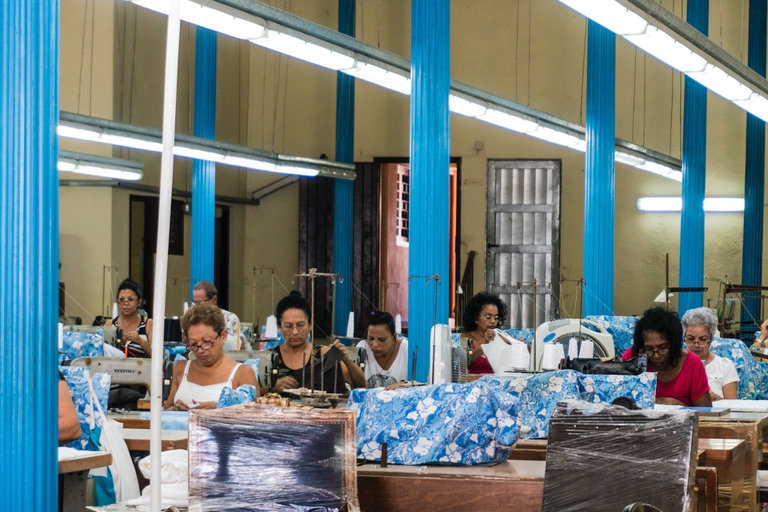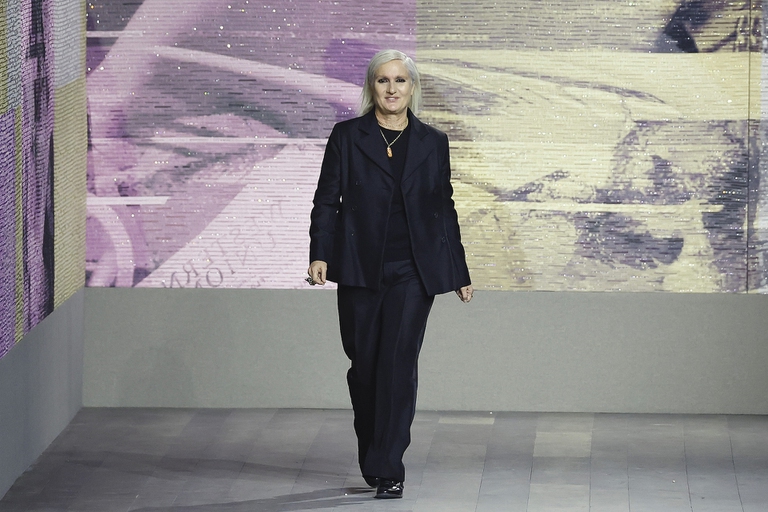https://www.lifegate.it/la-maggior-parte-dei-lavoratori-sfruttati-nel-tessile-nel-mondo-e-donna
- |
- 80 percent of textile workers globally are women.Especially regarding labor and the lower levels of the production chain.
- This is the result of a precise strategic choice based on gender disparities:women constitute a more docile and flexible workforce and generally earn a lower salary than men.
- At management level the situation is reversed:men are in the majority, occupying leadership positions and receiving greater pay.In fact, only 14 percent of large brands are led by a woman.
There percentage of women among workers in the clothing sector China is 70 percent, growing up to 85 Bangladesh and reaches 90 percent in Cambodia.At a global level, we can say that approximately80 percent of garment workers are women.This disproportion is not the result of chance, but the result of one gender discrimination very precise:women are desirable in the garment industry because employers exploit cultural stereotypes that females are often forced to adhere to.There are more women docile, flexible, weak and easier to stem.
Repressing a protest is easier if they are protesting only women or girls, that often they don't even report situations of exploitation for fear of suffering further abuse, often of a sexual nature.In Cambodia in the early days of 2014 well 3 people were killed and more than 40 injured within the scope of repression of some protests started on 24 December 2013:workers had taken to the streets to demand an increase in the minimum wage to $160 a month.The more women are employed, the lower the risk of such a protest.

Female work between emancipation and exploitation in developing countries
Historically, the integration of women into paid work has been one of the important forces for the emancipation and growing gender equality.The social economist Naila Kabeer, in his essay “The Power to Choose”, argues that working in the garment industry has allowed Bangladeshi women to gain recognition for their economic contribution to the family, and that garment workers tend to be more aware of their rights and to have a more critical mentality than other women.

If the aspect raised by Kabeer can represent one side of the coin, this potential for transformation certainly is undermined by conditions of exploitation of female staff in countries like Bangladesh.First, it is important to understand the way women were integrated into industry:Developing countries compete to produce for multinational brands by offering lower costs and one faster production and flexible.In a labor-intensive industry like clothing, this translates into lower wages, longer hours and poor labor and environmental standards.
The integration of women in garment factories played a crucial role in this process:factory owners have indeed took advantage of women's unequal position in society to train an even more economical, docile and flexible workforce.So instead of challenge their subordination in society, work in the clothing industry reproduces it.Women tend to earn much less than men, suffer systematic discrimination and can only access the lowest paid jobs, with poor promotion prospects.Many of them have low job security and, if they are not willing to work under the conditions set by their employers, they run the risk of losing their jobs.

The organization Clean Clothes, he collected for example the testimonies of numerous Indonesian workers, who report that “Girls in the factory are harassed by male managers who call them into their offices, whisper in their ears, touch them, bribe them with money, and threaten them with dismissal if they do not have sex with them.”If in general the working condition of women is disadvantaged throughout the world, in these countries the situation is even more dramatic, both from the point of view of remuneration and safety.Again according to what Clean Clothes reports, in some clothing factories it is It is customary to ask candidates if they are married or if they intend to have children.In fact, some employers only hire single and childless women while others make each woman sign a document in which she undertakes not to have children during the period of work.In still other cases, candidates are asked to undergo pregnancy tests during the intake phase:pregnant women or those who refuse to undergo the test are rejected from the start.Women who find themselves ad deal with pregnancy during employment in most cases they are forced to hide it, risking causing problems for the fetus, the alternative is to receive verbal harassment, higher production quotas, longer working hours and more difficult tasks, such as shifts that require standing rather than sitting.
And in the West?
This disparity and gender inequality are not going away when you move up the chain of command in the global fashion industry, indeed.Speaking of leadership positions in fact women occupy them for less than 25 percent if we look at the most important fashion companies.A study of Council of Fashion Designers of America, Glamor and McKinsey & Company has in fact adapted the concept of “Glass Ceiling” into “The Glass Runway” , i.e. glass walkway:Alone 14 percent of the big brands can boast a woman at its top and less than 50 percent of the most renowned fashion houses it is designed by a woman.

The report highlighted how, during the working life of a woman in the fashion industry, a sort of “ambition gap”:at the beginning of his career 70 percent of women aspire to become top executives, while only 60 percent of men do it.However, the ambitions then reversed along the way:those of men continue to grow, reaching 91 percent up to the vice president level, while those of women remain at 73 percent.This mechanism suggests that women's ambitions are not cultivated along the way, or that they themselves become more and more frustrated and disenchanted in the face of the obstacles encountered.
Throughout the fashion supply chain, men, despite representing a minority, they tend to hold higher-paid, higher-level positions, for example as general managers.Men in general find themselves performing more skilled jobs, more appreciated and paid even when it comes to manpower because they often have more opportunities to learn more skills than women.
